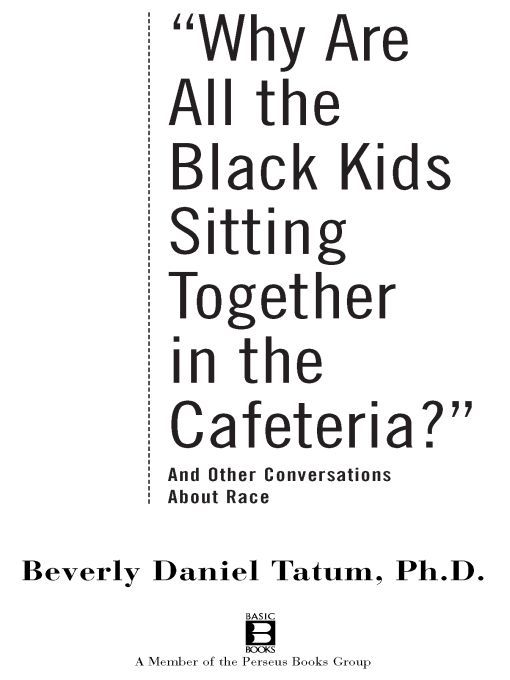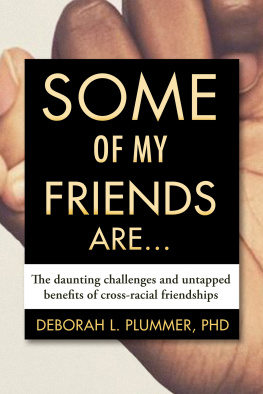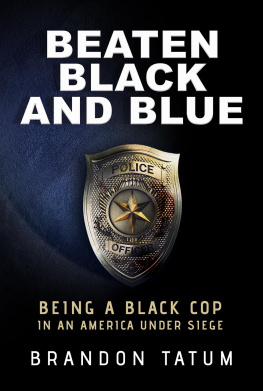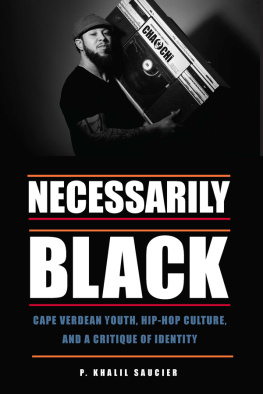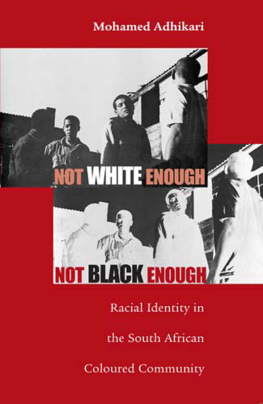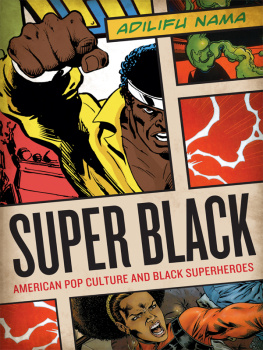Table of Contents
Also by Beverly Daniel Tatum, Ph.D.
Assimilation Blues: Black Families in a White Community
To my students, who will have the courage to go where no one else will go and do what no one else will do...
and
For my sons, who will surely know in their hearts how good and pleasant it is when brothers live together in unity...
When I dare to be powerfulto use my strength in the service of my vision, then it becomes less and less important whether I am afraid.
AUDRE LORDE
Introduction to the Paperback Edition (1999)
Beverly Daniel Tatum
Writing a book is a little like putting a note in a bottle and casting it out to sea. You have no idea where or when it will land, who will receive it, or what impact it will have.You simply send it out with the hope that someone will read its messageand that you might one day receive a reply. I am tremendously grateful that my message reached shore and that so many of my readers have in fact sent messages back to me, via letters, e-mail, and often in person at conferences and workshops. They tell me how useful my book has been in helping them talk to their children, their friends, and their colleagues about the difficult topic of racism. It seems that Why Are All the Black Kids Sitting Together in the Cafeteria?with that provocative question as its titlehas served as an entry point, a conversation starter even for those who ordinarily avoid such conversations. And that indeed was an important goal.
I put my message in this bottle not only to respond to commonly asked questions about race and racism but, more important, to help others move beyond fear, beyond anger, beyond denial to a new understanding of what racism is, how it impacts all of us, and ultimately what we can do about it. I wanted to en-courageliterally, to offer courageto every reader to break the silence about racism more often, and to offer hope that it is worth the effort to do so. I am blessed that so many readers have taken the time to let me know that they have found both courage and hope in these pages.
When I cast my message on the water, I did not know that my action would coincide with President Clintons call for a national conversation about race or that it would connect me to others whose courage and hope would both humble and inspire me. I never imagined that my message would wash up on the shores of the White House. I was surprised and thrilled when I came home from an afternoon of running errands one November day in 1997 and was greeted by my husband with uncharacteristic agitation. He told me that a member of the Presidents staff had called twice that afternoon looking for me. The caller offered an invitation to participate along with two other authors and a gathering of students and community leaders in President Clintons first Town Hall meeting on race in Akron, Ohio. That December 3 event was personally very exciting and symbolically very important. As I looked out at the thousands of people gathered in the auditorium, and imagined the millions of people watching the televised event, I thought of my students back at Mount Holyoke College and the need they express for models of antiracist action and leadership. Though there are those who criticized the Presidents Initiative as idle talk, I knew it offered hope for my students to see a powerful white man using his power to try to interrupt the cycle of racism.While acts of bigotry like the murders of James Byrd in Texas or of Matthew Shepard in Wyoming are usually well publicized and easy to spot, efforts to oppose bigotry and discrimination often go without notice in the media. In Akron, the power of the Presidency was making visible the work of community activists and concerned citizens participating in the forum who, in their daily lives, were trying to counteract racism. I was delighted to be a part of that process.
Just a few months earlier, in September 1997, I had been invited to participate in a conference commemorating the 40th anniversary of the desegregation of Central High School in Little Rock,Arkansas, a landmark event in civil rights history. This conference, one of the first involving the advisory panel of the Presidents Initiative on Race, allowed me not only to meet those distinguished panelists but also to hear firsthand the experiences of the Little Rock Nine. These African American men and women made tremendous personal sacrifices in their youth to create change in their community and I was awed by their courage. I had the opportunity to stand in front of the imposing structure that is Central High School, imagining how frightened those teenagers must have been as they walked through jeering crowds into hostile hallways. Across the street from the school, a new museum commemorating the struggle to desegregate Central High opened on the weekend I was in Little Rock. I was deeply moved when I walked through the exhibit behind an elderly white man, who paused at the museum exit and openly sobbed with what I imagined was both grief and shame about what racism had done to those students and his community.The power of his emotions and of mine reminded me again of how the legacy of racism has damaged all of us and why we all must work to dismantle it.
I tried to explain this point to a radio interviewer I met while traveling on a book tour. A white man in his 50s, he spoke despairingly of the fact that race relations had changed so little in his lifetime. He commented that although there had been progress during the Civil Rights era, since then it seemed that we lost momentum. He noted that segregation still persists, economic inequality has worsened, and racial violence continues to make national headlines.All these statements are true, and the temptation to despair is strong.Yet despair is an act of resignation I am not willing to make, and I urged him not to as well. In response, he pointed to his own racially mixed community as an example. Here was a place, he said, where people of color and white people lived together as neighbors, and yet there was little meaningful interaction across racial lines; no dialogue was taking place. He lamented,We just dont have the leaders we used to have, we dont have the leaders we need. I paused, and then asked,Well, if you are interested in dialogue, have you invited anyone to your house to talk about these issues? You are a person who has a sphere of influence. How are you using it to make things different?As Gandhi once said, we need to be the change we want to see happen.We are the leaders we have been waiting for.
I began this Introduction with an image of a person standing on the waters edge. I would like to end it with a different image. Several months ago I made a donation to the annual fund of City Year, a national service organization that gives young people the opportunity to spend a year doing service projects in cities across the United Statesa kind of urban Peace Corps. As a token of appreciation, I received a mug with a story printed on its side. It read:
A young girl was walking along a beach. To her amazement, she came upon thousands of starfish. Washed ashore by a storm, they were dying in the hot sun. The girl began to toss starfish back into the sea, one by one. After a while, a man approached her. Little girl, he asked, why are you doing this? There are thousands of starfish on the beach. You cannot possibly hope to make a difference! The girl was discouraged, and dropped the starfish in her hand. But a moment later, she bent down, picked up the starfish again, and tossed it as far as she could into the sea. She turned back to the man. Smiling brightly, she said, I made a difference to that one! Inspired, he joined her. A crowd had gathered, and soon others joined in. Before long, there were hundreds of people tossing starfish back into the sea and calling out, I made a difference to that one! After a while, their calls subsided. The girl looked up. To her amazement, she saw no starfish on the beach. Each one had been tossed back into the sea.

